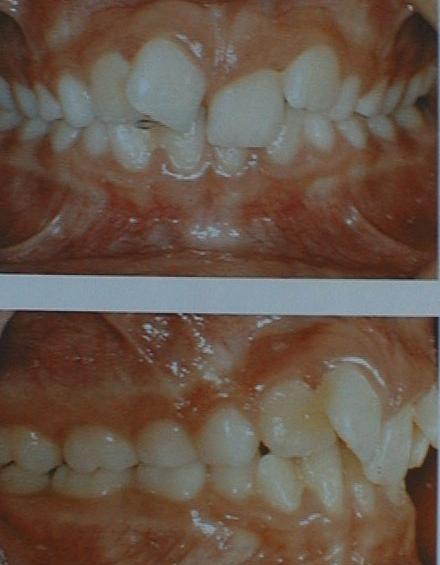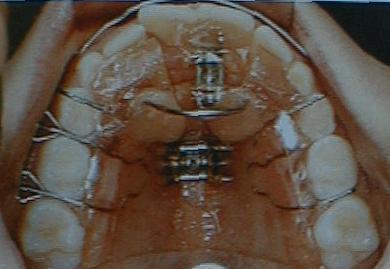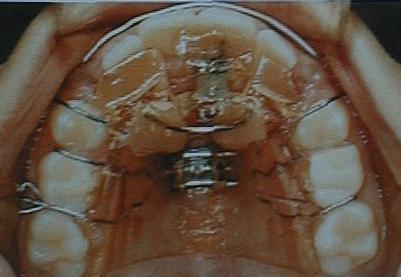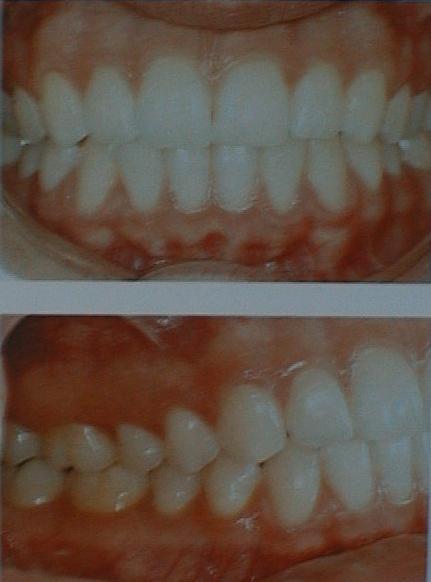
Eine Vorschubschlaufe wurde in die
Platte nachgerüstet, um die leichte Unterkiefer-Rücklage
zu korrigieren. Der Unterkiefer war mit einer einfachen Platte zum
Erhalt und Aufteilen des Platzes versorgt.
Im zweiten Bild
derselben Platte stehen die Schneidezähne schon fast korrekt,
aber für die erscheinenden Eckzähne ist noch Platz zu
schaffen. Dazu wurden die Milch-5er schmaler geschliffen, um deren
Breiten-Überschuss schon zu nutzen. Der 4er rechts im Bild
ist schon an seinen Platz geführt; der links, hinter der
kleineren Eckzahn-Lücke, hat noch 1 mm Weg frei.
Beim zweiten Plattenpaar (nicht gezeigt) kamen zur Feinkorrektur u.a. Federbolzenschrauben zum Einsatz, siehe entsprechendes Unterkapitel.
This incisor was severely tilted by an earlier accident, and was crowded in later. This indicated to start treatment already in the early mixed dentition (just permanent incisors + 6s). Starting later would make it more difficult, this means more burdening for the patient and more expensive.
The first plate appliance gains width by
acting the expansion screw, and guides the incisors into this
space simultaneously. They become derotated with time between the
outer labial bow and the inner screwed frontal segment, because
this is screwed forward and has a border that has been machined to
ideal shape.
The thick, downward directed wire arc was inserted
into the plate later. It serves to correct the slight backshift of
the lower jaw (for another kind of bite-jumper plates, see
sub-chapter „Pro-Stab“-..). The lower jaw was provided
with a simpler plate appliance, also to maintain and to distribute
the space there.


